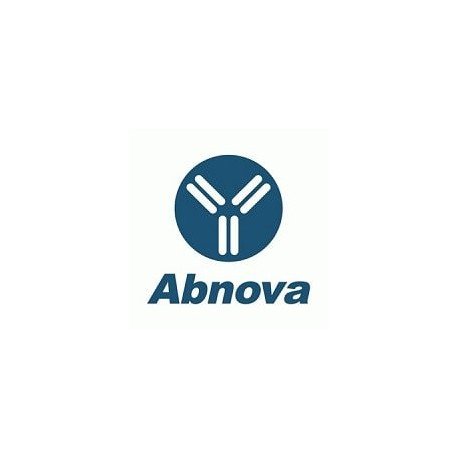Cart 0 Product Products (empty)
No products
To be determined Shipping
0,00 € Total
Prices are tax excluded
Product successfully added to your shopping cart
Quantity
Total
There are 0 items in your cart. There is 1 item in your cart.
Total products (tax excl.)
Total shipping (tax excl.) To be determined
Total (tax excl.)
Data sheet of SFRP1 polyclonal antibody
| Brand | Abnova |
| Product type | Primary antibodies |
| Reactivity | Bovine,Human,Mouse,Rat |
| Host species | Rabbit |
| Applications | ELISA,WB-Ce,IHC-P |
More info about SFRP1 polyclonal antibody
| Brand: | Abnova |
| Reference: | PAB10235 |
| Product name: | SFRP1 polyclonal antibody |
| Product description: | Rabbit polyclonal antibody raised against synthetic peptide of SFRP1. |
| Gene id: | 6422 |
| Gene name: | SFRP1 |
| Gene alias: | FRP|FRP-1|FRP1|FrzA|SARP2 |
| Gene description: | secreted frizzled-related protein 1 |
| Immunogen: | A synthetic peptide corresponding to 12 amino acids region of human SFRP1. |
| Protein accession: | O14779;NP_003003 |
| Form: | Liquid |
| Recommend dilutions: | ELISA (1:5000-1:25000) Western Blot (1:200-1:2000) Immunohistochemistry (1:800) The optimal working dilution should be determined by the end user. |
| Storage buffer: | In 20 mM KH2PO4, 150 mM NaCl, pH 7.2 (0.01% sodium azide) |
| Storage instruction: | Store at 4°C. For long term storage store at -20°C. Aliquot to avoid repeated freezing and thawing. |
| Quality control testing: | Antibody Reactive Against Synthetic Peptide. |
| Note: | This product contains sodium azide: a POISONOUS AND HAZARDOUS SUBSTANCE which should be handled by trained staff only. |
| Product type: | Primary antibodies |
| Host species: | Rabbit |
| Antigen species / target species: | Human |
| Specificity: | This affinity purified antibody is directed against human SFRP protein. |
| Reactivity: | Bovine,Human,Mouse,Rat |
| Application image: |  |
| Application image note: | Immunohistochemistry of SFRP1 polyclonal antibody (Cat # PAB10235) was used at a 1 : 800 dilution for 20 min to detect SFRP1 in human dermal hypertrophic scar tissue. Tissue was formalin-fixed followed by heat mediated antigen retrieval prior to blocking. HRP Goat-anti-Rabbit IgG (p/n 611-1302) is suitable for secondary antibody detection. |
| Applications: | ELISA,WB-Ce,IHC-P |
| Shipping condition: | Dry Ice |
| Publications: | Human secreted frizzled-related protein is down-regulated and induces apoptosis in human cervical cancer.Ko J, Ryu KS, Lee YH, Na DS, Kim YS, Oh YM, Kim IS, Kim JW. Exp Cell Res. 2002 Nov 1;280(2):280-7. |


